
Playing the World Game will make students more familiar with continents, oceans, countries and states.
- Subject:
- Social Studies
- Material Type:
- Lesson
- Lesson Plan
- Author:
- Utah Lesson Plans
- Date Added:
- 01/11/2023

Playing the World Game will make students more familiar with continents, oceans, countries and states.
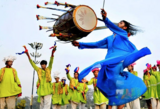
This lesson is designed for World Geography teachers to teach standard 3 about Culture to students. In the end students will be creating a video sharing their culture and showing their understanding of what culture is and what influences it has based on place, religion, etc...

his lesson uses music and art in a vocabulary study of unfamiliar words from the song "America the Beautiful," increasing students' vocabulary while also increasing their knowledge of U.S. geography. A discussion to activate students' prior knowledge about sights and scenery throughout the United States is followed by a read-aloud and introduction to the song "America the Beautiful," which is then sung in each session of the lesson. Students learn the meanings of the song's words through shared reading and the use of context clues and images. Students then use photographs, illustrations, and descriptive language to create a mural shaped like the United States. Finally, through pictures and words, students reflect on what they have learned. This lesson is appropriate and adaptable for any patriotic event or holiday, and many of the vocabulary strategies are adaptable for other texts or word lists, as well.

This lesson plan examines the events of the Bloodiest day in American History and helps students to understand the complexities of the event. Students will use the American Battlefield Trust Antietam 360 Virtual Tour to study certain moments of the battle and analyze how the natural and man-made environment affected the maneuvers, strategies, and tactics used during the battle as well as how these factors impacted the outcome of the battle.

Word Count: 7198
(Note: This resource's metadata has been created automatically by reformatting and/or combining the information that the author initially provided as part of a bulk import process.)
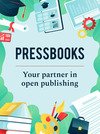
Word Count: 9323
(Note: This resource's metadata has been created automatically by reformatting and/or combining the information that the author initially provided as part of a bulk import process.)
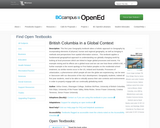
This first year Geography textbook takes a holistic approach to Geography by incorporating elements of physical, human and regional geography, as well as bringing in methods and perspectives from spatial information science.. This textbook applies a fundamental geographical approach to understanding our globally changing world by looking at local processes which are linked to larger global processes and events. For example mining and its effects are a global issue and we can see how these unfold in BC. A further example is the recent apology to First Nation peoples on the residential school treatment, as similar events occur in the US, Ireland and Australia. Processes of urbanization, a phenomenon which people all over the globe are experiencing, can be seen in Vancouver with our discussion of the citys development. Geography students, indeed all first year students, need to be able to critically assess their own contexts and environments in order to properly engage with our continually globalizing world.
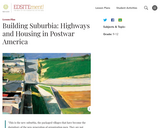
This lesson highlights the changing relationship between the city center and the suburb in the postwar decades, especially in the 1950s. Students will look at the legislation leading up to and including the Federal Highway Act of 1956. They will also examine documents about the history of Levittown, the most famous and most important of the postwar suburban planned developments.

In this video segment from Nature, scientists work to discover why bees are disappearing.

This article describes common misconceptions about the Arctic and Antarctica and how to test and teach for student understanding.
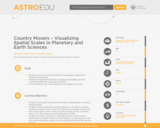
Students learn about local and planetary physical geography / geology, toponymy, planetary landing site selection and cartography. The students learn a complex process of landscape evaluation and city planning, based on the interpretation of photomaps or digital terrain models.

The disappearance of bees will have tremendous impact upon the way we live according to scientists in this segment from Nature.

The history of earthquakes in the San Francisco Bay area is plotted on a digital map and analyzed in this video segment adapted from NOVA.

With e-pals, students develop real-life writing and social experiences, learn the format of a friendly letter and parts of an e-mail message, and discover other cultures, languages, and geographic areas.

This article provides an overview of orienteering and geocaching as well as suggestions for incorporating these activities into elementary classrooms
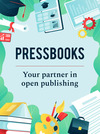
Word Count: 55656
(Note: This resource's metadata has been created automatically by reformatting and/or combining the information that the author initially provided as part of a bulk import process.)

Three lesson plans including classroom activities, assignments, homework, and keys. Lesson 1: Gift of the Nile, map, worksheet, visual literacy, Lesson 2. Barter Beer and Bread, Lesson 3. Nile, Red Sea, and Mediterranean Trade

This is a lesson that uses collaboration and technology to discuss and view earth's geography and human settlements and how the landforms support life on earth. Cover image source:https://www.freeimages.com/photo/apple-1327446

This video segment adapted from NOVA features the youngest rock formations in the Grand Canyon, lava dams, and how they are subject to the eroding power of water.

Release of the film Green Book (2018) inspired renewed interest in the experiences of African Americans when traveling in the United States during the 20th century. This inquiry-based lesson combines individual investigations with whole or small group analysis of elementary sources and visual media to investigate the compelling question: How have the intersections of race and place impacted U.S. history and culture?